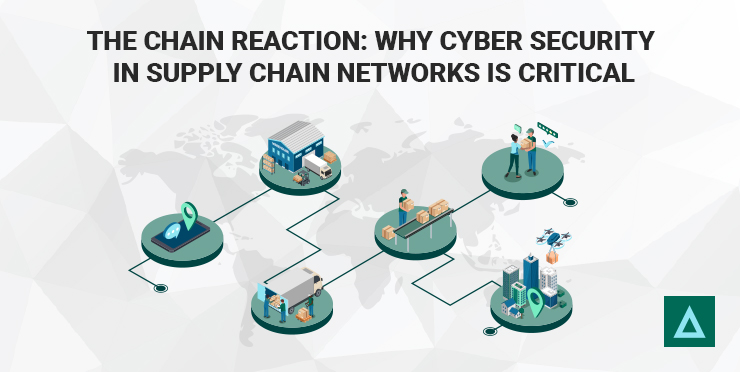Understanding Supply Chain Attacks

Supply chain attacks are a sophisticated form of cyber threat where attackers target the less secure elements within an organization’s supply chain to compromise the entire system. These attacks exploit vulnerabilities at any stage of the supply chain, from the initial production of software or hardware to the final delivery to the end user. By breaching one link, attackers can potentially infiltrate multiple organizations that rely on the compromised product or service.
The nature of supply chain attacks makes them particularly insidious. Attackers often focus on third-party vendors or service providers, which may have weaker security protocols than the primary target. Common points of vulnerability include software updates, hardware components, and third-party services. For instance, malicious code can be inserted during software updates, or unauthorized components can be integrated into hardware during manufacturing.
Historically, supply chain attacks have had significant impacts. One of the most notable examples is the 2017 NotPetya attack, which originated from a compromised software update in a widely used accounting software. This attack caused billions of dollars in damages and disrupted operations globally. Another prominent case is the SolarWinds attack in 2020, where attackers inserted malicious code into the SolarWinds Orion software, affecting numerous government agencies and large corporations.
The tactics employed by attackers are continuously evolving. Modern supply chain attacks often involve advanced persistent threats (APTs), where attackers maintain a long-term presence within the compromised system. They may use sophisticated methods like code obfuscation and encryption to avoid detection. Additionally, attackers are increasingly leveraging artificial intelligence and machine learning to identify and exploit new vulnerabilities.
Given the complexity and potential impact of supply chain attacks, it is crucial for organizations to stay informed about these threats. Continuous monitoring, vulnerability assessments, and implementing robust security measures across the entire supply chain are essential steps in mitigating these risks. By understanding the nature and tactics of supply chain attacks, businesses can better prepare and protect themselves against these evolving threats.
Key Mitigation Strategies
Mitigating the risk of supply chain attacks requires a multifaceted approach, entailing thorough and proactive strategies. One of the foremost steps organizations can take is implementing comprehensive vendor risk management. This involves conducting detailed due diligence on all third-party vendors to understand their security posture. By evaluating their cybersecurity policies, previous security incidents, and overall risk profile, organizations can make informed decisions about which vendors to partner with.
Thorough security assessments and regular audits of third-party vendors are also crucial. These assessments should not be a one-time activity but rather an ongoing process. Regular audits help ensure that vendors comply with security standards and that any vulnerabilities are promptly addressed. Furthermore, organizations should require vendors to adhere to industry-specific cybersecurity frameworks and standards, such as ISO/IEC 27001 or NIST.
In addition to vendor management, implementing robust security policies and practices within the organization itself is vital. Encryption of sensitive data, both at rest and in transit, can significantly reduce the risk of data breaches. Multi-factor authentication (MFA) adds an extra layer of security by requiring multiple forms of verification before granting access to critical systems. Network segmentation, which involves dividing a network into smaller, isolated segments, can limit the spread of an attack and contain potential breaches.
Real-world examples highlight the effectiveness of these strategies. For instance, a multinational corporation faced a supply chain attack that targeted its third-party software provider. By having a rigorous vendor risk management framework and conducting regular audits, the corporation quickly identified the breach and minimized damage. Another case involved a financial institution that employed encryption and MFA extensively, which thwarted an attempted supply chain attack aimed at compromising customer data.
By adopting these key mitigation strategies, organizations can significantly enhance their resilience against supply chain attacks. A proactive and layered approach to cybersecurity ensures not only the protection of critical assets but also the continuity of business operations in an increasingly complex threat landscape.
Technological Solutions and Innovations
In 2024, organizations are increasingly turning to advanced technological solutions to safeguard their supply chains from sophisticated cyber threats. Leveraging the power of artificial intelligence (AI) and machine learning (ML), companies can now more effectively detect and respond to potential threats. AI and ML tools excel in analyzing vast amounts of data to identify patterns indicative of malicious activity, enabling faster and more accurate threat detection and response. These tools not only enhance cybersecurity but also reduce the burden on human analysts, allowing them to focus on more strategic tasks.
Blockchain technology has also emerged as a vital component for achieving supply chain transparency and security. By creating an immutable ledger of transactions, blockchain ensures that every step in the supply chain is recorded and verifiable. This level of transparency helps in preventing tampering and unauthorized alterations, thus securing the integrity of the supply chain. Blockchain’s decentralized nature further adds a layer of security, making it more resilient against attacks aimed at single points of failure.
Automated compliance monitoring is another critical innovation, ensuring that organizations adhere to regulatory requirements and internal policies without the need for constant manual oversight. Automated tools can continuously scan and assess systems for compliance, providing real-time alerts and reports. This proactive approach not only helps in maintaining regulatory standards but also in identifying vulnerabilities that could be exploited by attackers.
Emerging technologies, such as quantum computing and the Internet of Things (IoT), hold significant promise for enhancing supply chain security. Quantum computing, with its unparalleled processing power, could revolutionize encryption methods, making them virtually unbreakable. Meanwhile, IoT devices, when properly secured, can provide real-time monitoring and data collection across the supply chain, offering deeper insights and quicker responses to potential disruptions.
Selecting and implementing these technologies within an organization requires a strategic approach. It is essential to conduct thorough assessments to identify the most appropriate solutions that align with the organization’s specific needs and risk profile. Additionally, integration with existing systems and processes should be carefully managed to ensure seamless operation and maximum benefit.
Building a Resilient Supply Chain
In an era where supply chain attacks are becoming increasingly sophisticated, developing a resilient supply chain is paramount. A comprehensive incident response plan serves as the cornerstone of this resilience. This plan should outline clear procedures for detecting, responding to, and recovering from supply chain attacks. It is crucial to regularly update and test this plan to ensure its effectiveness in real-world scenarios. Organizations should also establish a dedicated incident response team trained to handle various types of supply chain disruptions.
Another critical component of supply chain resilience is conducting regular training and awareness programs for employees. These programs should educate staff about the latest threats and best practices for mitigating risks. Employees at all levels should understand their role in maintaining the security of the supply chain, from recognizing phishing attempts to adhering to security protocols. Fostering a culture of security within the organization enhances overall vigilance and reduces the likelihood of successful attacks.
Collaboration with industry peers and sharing threat intelligence are also vital for building a resilient supply chain. By participating in information-sharing networks, organizations can stay informed about emerging threats and effective mitigation strategies. This collaborative approach allows companies to collectively enhance their defenses and respond more swiftly to potential attacks. It also facilitates the development of industry-wide standards and best practices for supply chain security.
Practical tips for maintaining supply chain resilience include regularly auditing suppliers for compliance with security standards, implementing multi-factor authentication for accessing sensitive systems, and utilizing advanced threat detection tools. Additionally, organizations should diversify their supplier base to reduce dependence on any single supplier, which can mitigate the impact of a targeted attack. Establishing strong contractual agreements with suppliers that include security requirements and incident reporting obligations further strengthens the supply chain’s defense mechanisms.
By integrating these strategies, organizations can create a resilient supply chain capable of withstanding and quickly recovering from attacks, thereby safeguarding their operations and maintaining business continuity.

